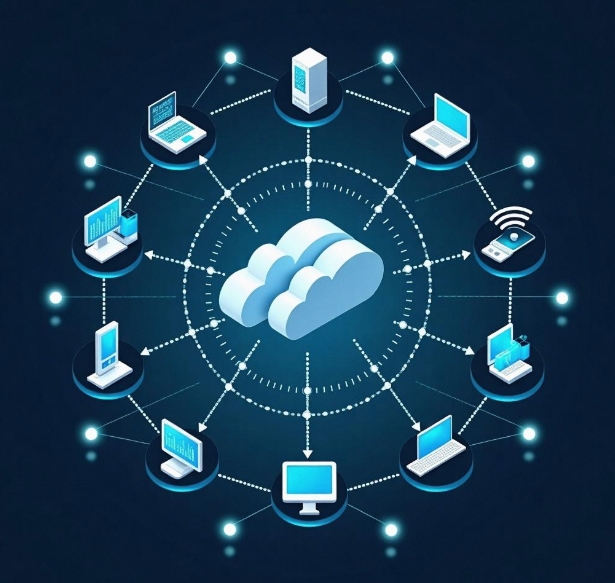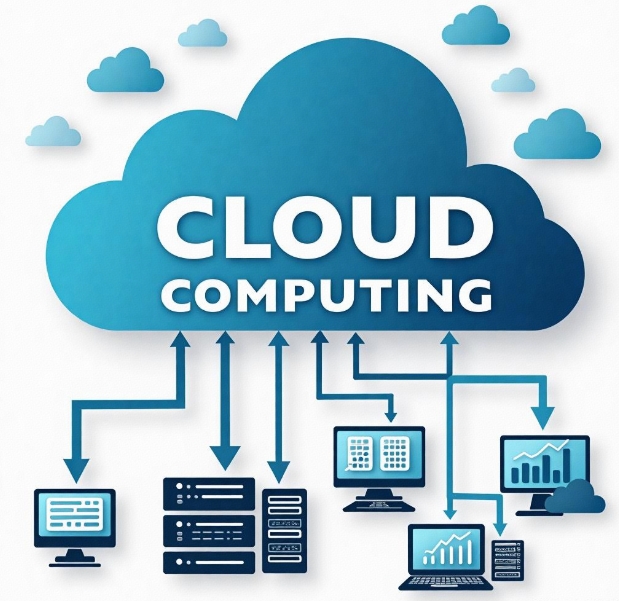Cloud Platform Selection and Data Management in IoT Development
- latest articles
- 1.DApp Development & Customization: Merging Diverse Market Needs with User Experience 2.Analysis of the Core Technical System in DApp Project Development 3.How to achieve cross-chain interoperability in Web3 projects? 4.How does the tokenization of points reconstruct the e-commerce ecosystem? 5.How to Set and Track Data Metrics for a Points Mall? 6.What is DApp Development? Core Concepts and Technical Analysis 7.Inventory of commonly used Web3 development tools and usage tips 8.Development of a Distribution System Integrated with Social E-commerce 9.Six Key Steps for Businesses to Build a Points Mall System 10.What is DApp Development? A Comprehensive Guide from Concept to Implementation
- Popular Articles
- 1.Future Trends and Technology Predictions for APP Development in 2025 2.Analysis of the DeFi Ecosystem: How Developers Can Participate in Decentralized Finance Innovation 3.From Zero to One: How PI Mall Revolutionizes the Traditional E-commerce Model 4.DAPP Development | Best Practices for Professional Customization and Rapid Launch 5.How to Develop a Successful Douyin Mini Program: Technical Architecture and Best Practices 6.Recommended by the Web3 developer community: the most noteworthy forums and resources 7.From Cloud Computing to Computing Power Leasing: Building a Flexible and Scalable Computing Resource Platform 8.Shared Bike System APP: The Convenient Choice in the Era of Smart Travel 9.How to Create a Successful Dating App: From Needs Analysis to User Experience Design 10.From Design to Development: The Complete Process of Bringing an APP Idea to Life
In today's rapidly developing era of the Internet of Things (IoT), cloud platforms have become a crucial cornerstone supporting IoT applications and services. The selection of cloud platforms and data management in IoT development not only relates to system stability and efficiency but also directly impacts data security, scalability, and sustainability. Therefore, during the development of IoT projects, how to reasonably choose a cloud platform and efficiently manage IoT data has become a key issue that enterprises and developers must address.
This article will start from the background of IoT, explore the role of cloud platforms in IoT, analyze the considerations for cloud platform selection, and discuss in detail the best practices and challenges of IoT data management.
I. The Relationship Between IoT and Cloud Platforms
The Internet of Things connects everyday physical devices to the internet through various sensors, devices, and network connections, enabling automatic information exchange and intelligent processing. Unlike traditional information technology architectures, IoT systems need to handle massive data streams, and this data requires fast, real-time analysis and processing to achieve intelligent decision-making and automated control.
As the core component of IoT systems, cloud platforms undertake multiple functions such as data storage, processing, analysis, and distribution. Through cloud platforms, IoT systems can achieve remote device management, centralized data processing, and intelligent analytical decision-making. It can be said that cloud platforms are one of the keys to IoT success; their performance, scalability, and security directly affect the operational effectiveness of IoT systems.
During the IoT development process, selecting an appropriate cloud platform can make the system architecture clearer and more efficient, reduce development costs, and enhance data processing and analysis capabilities. Therefore, cloud platform selection and data management have become core issues in IoT development.
II. Key Factors in Cloud Platform Selection
Choosing a suitable cloud platform is a crucial step in the IoT development process. Different cloud platforms offer different services and functions, and developers need to make their selection based on specific project requirements, technical needs, budget, and business goals. The following are key factors to consider when selecting a cloud platform for IoT development:
1. Scalability
IoT systems typically need to handle massive amounts of data, and the number of devices and data traffic will continuously increase over time. Therefore, the cloud platform must possess high scalability, allowing for dynamic resource adjustments according to changing business needs. Choosing a cloud platform that supports elastic scaling ensures that the system remains stable under high load conditions.
2. Real-time Performance and Low Latency
IoT applications often have strict requirements for data processing and response times, especially in scenarios requiring real-time decision-making and control (such as smart manufacturing, intelligent transportation, etc.). Therefore, the real-time data processing capability of the cloud platform is crucial. Developers need to choose cloud platforms that support Edge Computing, which can move data processing from the cloud closer to the devices, reducing data transmission latency and improving response speed.
3. Data Security
IoT involves a large amount of personal and enterprise data, and the security of this data must be guaranteed. Cloud platform providers need to have robust security protection capabilities, including multiple security mechanisms such as data encryption, identity authentication, and access control. Additionally, the compliance of the cloud platform is an important consideration, especially in industries where data protection laws and industry standards are very strict (such as GDPR, HIPAA, etc.).
4. Cost and Billing Model
The cost structure of cloud platforms is usually complex, with different services charging based on usage, storage capacity, bandwidth, and other factors. For IoT projects, controlling costs reasonably is very important. Therefore, during selection, developers need to carefully evaluate the billing models of different platforms and choose a cloud platform with high cost-effectiveness that meets the project's needs.
5. Platform Support and Services
Developers need to choose cloud platforms that provide comprehensive technical support and developer tools. The SDKs, API interfaces, documentation, and community support offered by the platform can significantly improve development efficiency and reduce obstacles during development.
6. Compatibility and Integration Capability
IoT systems often need to integrate with various devices, protocols, and systems, so the compatibility of the cloud platform is also a very important consideration. Choosing a cloud platform that supports different IoT protocols (such as MQTT, CoAP, HTTP, etc.) and device standards can help developers easily achieve device connectivity and data interaction.
III. Data Management in IoT
Data management is another key issue in IoT development. IoT systems generate large amounts of data that need to be effectively stored, processed, analyzed, and applied. How to design an efficient and reliable data management system is an important criterion for the success of IoT.
1. Data Storage
The storage requirements for IoT data are very high. Firstly, the data storage system needs to handle large-scale data volumes while supporting high-frequency data writes. Secondly, the storage system must have high reliability to ensure that data is not lost or corrupted.
Common IoT data storage methods include relational databases (such as MySQL, PostgreSQL), non-relational databases (such as MongoDB, Cassandra), and time-series databases (such as InfluxDB, TimescaleDB). Due to their optimization for time-series data, time-series databases have become a widely adopted storage solution in IoT applications.
2. Data Processing and Analysis
IoT data often requires real-time processing and analysis to provide value to the business. The data processing process includes steps such as data cleaning, data transformation, and data aggregation. Cloud platforms typically offer various data processing services, such as stream data processing and batch data processing.
In terms of data analysis, cloud platforms often integrate artificial intelligence (AI) and machine learning (ML) tools. Developers can use these tools to perform in-depth data analysis, extract valuable information, and conduct predictive maintenance, behavior analysis, etc.
3. Data Sharing and Interaction
IoT data not only needs to be stored and processed but also shared and interacted with. Cloud platforms typically provide data API interfaces and SDKs, allowing developers to interact data with other systems or applications. This is crucial for the interoperability and scalability of IoT applications.
4. Data Security and Privacy Protection
With the proliferation of IoT applications, data security and privacy protection have become very important topics. To ensure data security, cloud platforms typically provide security measures such as data encryption, data isolation, and access control. Additionally, developers need to comply with relevant laws and regulations, such as GDPR, to ensure the protection of user privacy.
IV. Best Practices for Cloud Platform Selection and Data Management
In IoT development, selecting the right cloud platform and implementing efficient data management can significantly enhance system performance and user experience. Here are some best practices:
Assess requirements and choose the appropriate cloud platform: When selecting a cloud platform, developers need to clarify the project's specific requirements, including scalability needs, real-time performance requirements, security requirements, etc. Based on these requirements, choose a cloud platform that meets them.
Adopt edge computing to optimize real-time performance: For IoT applications requiring low latency, it is recommended to choose a cloud platform that supports edge computing, moving data processing tasks from the cloud closer to the devices to reduce data transmission latency.
Use time-series databases for storing IoT data: For the large amounts of time-series data generated by IoT, using time-series databases can greatly improve data storage and query efficiency.
Strengthen data security measures: To ensure data security and privacy protection, developers should choose cloud platforms with comprehensive security mechanisms and implement measures such as data encryption and access control to prevent data leaks.
Continuously optimize data processing workflows: IoT data processing is a dynamic process; developers should continuously optimize data processing and analysis workflows to ensure system efficiency and responsiveness.
V. Summary
Cloud platform selection and data management in IoT development are key factors for successfully implementing IoT applications. Reasonably selecting a cloud platform not only provides guarantees for system scalability, real-time performance, and security but also optimizes data storage and processing workflows, improving the overall system's performance and efficiency. Meanwhile, as IoT applications continue to develop, cloud platform and data management technologies are also constantly advancing. Developers need to continuously monitor technological changes and emerging solutions to ensure that IoT systems can meet growing challenges and demands.
In the future, as IoT technology matures and application scenarios become more diverse, cloud platforms and data management will play increasingly important roles in the IoT ecosystem, driving continuous improvements in intelligence and automation levels.
-

How to Use IoT Development to Enhance Supply Chain Efficiency
With the rapid development of the global economy and the deepening of digital tr···
-

Development and Innovation of the Internet of Things in the Healthcare Sector
With the rapid advancement of information technology, the Internet of Things (Io···
-

Data Storage and Analysis Methods in IoT Development
The Internet of Things (IoT) is one of the most revolutionary innovations in tod···

 Blockchain
Blockchain












